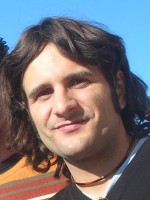resumo
The use of sunscreens as protective barriers against skin damage and cancer, by absorbing harmful UVA and UVB rays, is becoming an increasingly important issue. Such products are usually based on TiO2 or ZnO, although both Fe2O3 and hydroxyapatite (Ca-10(PO4)(6)(OH)(2), HAp) doped with metal ions have been reported as being ultraviolet (UV) absorbing materials. HAp is the main component of bone; it is, therefore, highly biocompatible. In the present work, an iron-doped HAp-based material, containing both Fe ions substituted into the HAp structure and iron oxide in hematite (alpha-Fe2O3) form, was successfully developed from waste cod fish bones. This was achieved through a simple process of treating the bones in a Fe(II) containing solution, followed by heating at 700 degrees C. The material showed good absorption in the whole UV range and did not form radicals when irradiated. The sunscreen cream formulated with this material could be used as a broad sunscreen protector (lambda(crit) > 370 nm), showing high absorption both in the UVA and UVB ranges. Because of its absorption properties it would be classified as 5 star protection according to the Boots UVA star rating system. The cream is also photostable, and does not cause irritation or erythema formation when in contact with the human skin. These results show that a food by-product such as fish bones could be converted into a valuable product, with potential applications in health care and cosmetics. This is the first time a HAp-based sunscreen cream has been developed and validated as a proof of concept.
palavras-chave
PHOSPHATE-BASED MATERIALS; SUN PROTECTION; UV; PARTICLES; TIO2; EFFICACY; BEHAVIOR; TESTS
categoria
Materials Science
autores
Piccirillo, C; Rocha, C; Tobaldi, DM; Pullar, RC; Labrincha, JA; Ferreira, MO; Castro, PML; Pintado, MME
nossos autores
Projectos
agradecimentos
This work was funded through the iCOD project (Inovadora Tecnologias para a Valorizacao de Subprodutos do Processamento do Bacalhau, contract QREN AdI I vertical bar 466). The authors also acknowledge PEst-C/CTM/LA0011/2013 and PEst-OE/EQB/LA0016/2011 programmes. C. Piccirillo thanks FCT research grant SFRH/BPD/86483/2012 for supporting this work. R. C. Pullar acknowledges the support of the FCT Ciencia2008 programme. D. M. Tobaldi is grateful to the ECO-SEE project (European Union 7th Framework Programme, grant agreement no. 609234).




